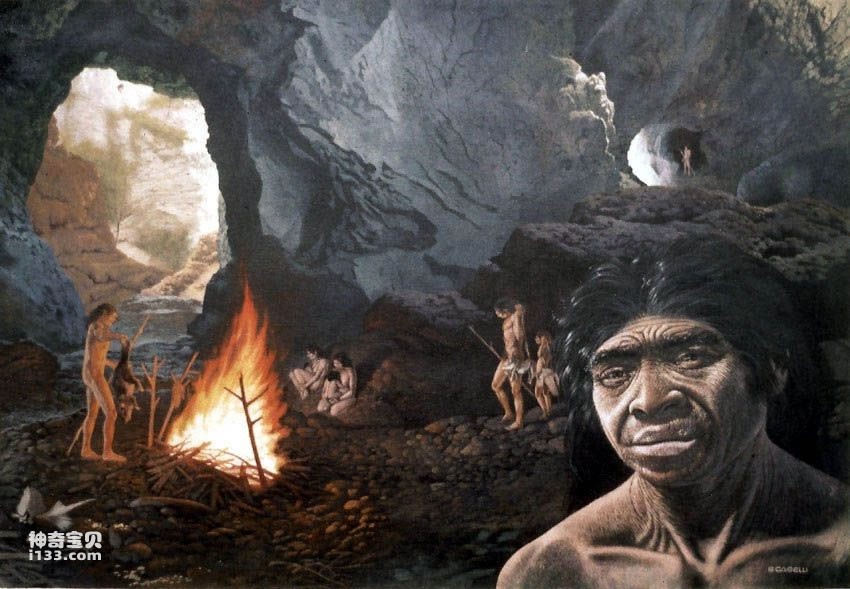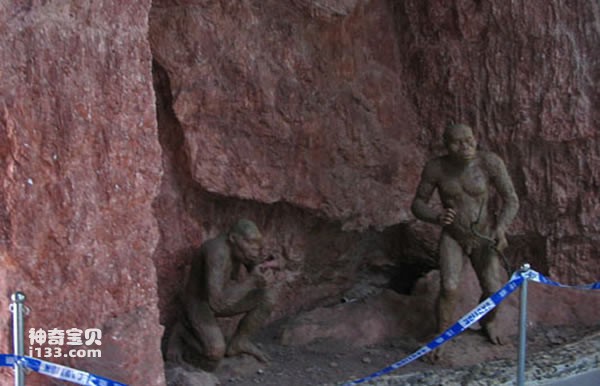Where do people come from? This is an eternal question in the process of human self-understanding. It is not only a question asked by philosophers, but also paleontologists and archaeologists are trying to find answers through fossils and other means. The idea that modern human ancestors "walked out of Africa" is based on the discovery of many ancient human fossils and genetics in Africa. However, how human ancestors migrated and evolved after leaving Africa is also a difficult problem. A team led by Zhang Yaping, academician of the Kunming Institute of Zoology, Chinese Academy of Sciences, found the answer in the genes of people of various ethnic groups in Asia.
Mother’s mitochondrial DNA is passed down from generation to generation
To some people, it seems that only archeology and geology have the ability to trace events in the distant past. The two excavated fossil remains buried underground, and then used various methods to identify and speculate on their age and characteristics, and thus speculated on some opinions.
So, how do geneticists look for clues from ancient times? In terms of the composition of life, every life is composed of countless cells. Each cell contains capsule-shaped mitochondria. The number of mitochondria can range from 1,000 to 10,000. Mitochondria provide energy for cell activities, so they are called "cell power factories". In addition to participating in processes such as cell differentiation, cell information transmission, and apoptosis, mitochondria also have their own genetic material and genetic system.
Within each mitochondria, there are approximately 2 to 10 sets of mitochondrial DNA. For animals, the mitochondrial DNA in fertilized eggs mainly comes from the mother; plants have slight variations, but mainly come from the mother; fungi come from both parents. Therefore, by studying mitochondrial DNA in the human body, we can trace whether these people share a "distant grandmother". This is exactly the approach adopted by Academician Zhang Yaping’s research team.

Restoration map of life of Peking Man
Yuanmou Man and Peking Man have nothing to do with modern humans
This research topic on the evolution of Asian populations has lasted for many years. The research team led by Academician Zhang Yaping verified more than 6,000 samples and found that the mitochondrial DNA in these samples traced back to Africa. No ancient humans like Yuanmou Man and Beijing Zhoukoudian Man have been found to have contributed to modern Chinese. Contemporary Chinese people all have a very recent African ancestor. So, why are the genes of ancient humans such as Peking Man and Yuanmou Man not passed down? Some studies believe that the harsh climate conditions of the Ice Age may have been an important reason for the extinction of ancient humans.
So, how did the ancestors of contemporary Chinese people come to the East Asian continent? Academician Zhang Yaping's research team found that the ancestors came from East Africa to West Asia, and then migrated rapidly along the coastline of southern Asia, passing through the South Asian subcontinent, and heading north from Southeast Asia into East Asia.

Yuanmou ape-man restoration map
When did humans first move to the Qinghai-Tibet Plateau?
"When did humans first successfully settle on the Qinghai-Tibet Plateau?" This is a controversial issue in the fields of archeology, history and genetics. The Qinghai-Tibet Plateau, known as the "Roof of the World", has a harsh natural environment. It is amazing that humans can survive in such an environment.
Academician Zhang Yaping's research team analyzed 680 Tibetan population samples from Qinghai, Tibet, Sichuan, Yunnan, Gansu and other places. The results show that about 98% of the maternal genetic components of modern Tibetans can be traced back to the northern Chinese people who migrated to the Tibetan Plateau since the Neolithic period. At the same time, the study also discovered a special new base component—haplotype M16. Different from the maternal genetic component originating from northern Chinese populations, cluster M16 directly differentiated from the founding cluster M of Eurasia and can basically only be observed in Tibetan populations. The most reasonable explanation for this result is that the M16 group likely represents the maternal genetic component of modern human ancestors who settled on the Tibetan Plateau in the Late Paleolithic and continues to this day.
At the same time, there is a Paleolithic site with human handprints and footprints near Lhasa, the heart of the Qinghai-Tibet Plateau. The estimated time of this site (20,600 to 21,700 years) is very close to the age of the M16 group, and supports it to a certain extent. the above point of view.
In order to adapt to the harsh environment of the Qinghai-Tibet Plateau, the Tibetan people have evolved special abilities to overcome altitude sickness. Subsequent studies by multiple research teams at home and abroad have shown that there are two genes (EPAS1 and EGLN1) in the Tibetan people, which can regulate the production of heme in the blood under hypoxic conditions and reduce the possibility of various plateau diseases.
animal tags:
We created this article in conjunction with AI technology, then made sure it was fact-checked and edited by a Animals Top editor.